Energy
Welcome to “Oil & Gas Silencing” Bill C-59: Where Trudeau’s Science Court Rules, Not Real People With Real Science
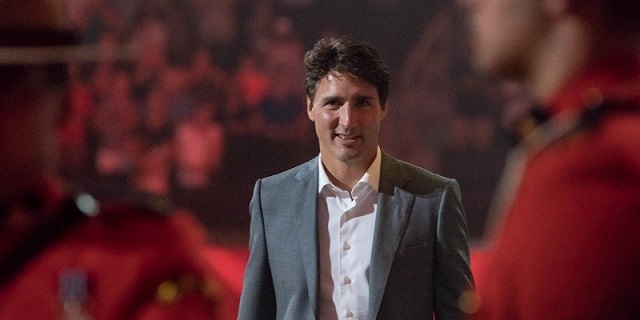
From EnergyNow.ca
By Jim Warren
Follow those who seek the truth. Run from the man who says he’s found it.
-Václav Havel, first president of Czechoslovakia after the 1989 Velvet Revolution.
In addition to its threat to the right of free expression, Bill C-59, stands as a threat to the free spirit of inquiry that sustains modern science. Many of the efforts undertaken today to reduce the environmental footprint of the gas and petroleum industries are based on scientific research conducted by professionals whose efforts are guided by a set of well-established philosophical and methodological principles. The efforts of climate change scientists who attempt to more accurately assess the causes, pace and intensity of anthropogenic global warming operate under similar guidelines.
Science regulates adherence to its philosophical and methodological standards through a system whereby research methods and the findings of research are published and reviewed by panels of experienced practitioners in its various disciplines – the famous scientific peer review process. In this way the quality of findings can be assessed. Findings that are based on flawed methodology can be outright rejected or researchers can be asked to adjust their methods and try again. Even if a statistical study or experiment has made it through peer review once, ongoing efforts are made to check the work against new information and experiments are subjected to replication efforts.
Rejections of flawed research can happen quickly, but, unfortunately, can sometimes take years. For example, it took the leading medical journal, The Lancet, 12 years to debunk a fraudulent 1998 study it had published linking vaccinations for measles, mumps and rubella (MMR) to colitis which was in turn linked to autism.
Bill C-59 proposes to establish a government appointed agency with the capacity to launch prosecutions which will presumably be adjudicated by a quasi-judicial panel or tribunal with the ability to impose jaw-dropping penalties in the millions. The tribunal will assess claims made by conventional energy companies about improvements regarding things such as emissions levels. Judgments will similarly be made regarding the claims of journalists and individuals who publish the claims of those companies. This is a process that will lead to dividing the findings of science into a government approved body of work and heretical unapproved science.
The Soviet Union adopted the practice of recognizing only politically-correct government-approved science. One of the many reasons Soviet agriculture was so backward was because the approved method for improving crop genetics to develop varieties with greater tolerance to drought and early frosts was based on the “Party-approved” theory, Lamarckism. This was the idea that a trait that developed due to use or disuse during an organism’s lifetime could be transmitted to its offspring. If you grew a plant during a drought, its offspring would be drought tolerant.
Prosecutions under the Bill C-59 legislation will place a reverse onus condition on the accused. Those charged will not be presumed innocent until proven guilty. They will be required to prove what they said was true.
Willy Pickton and Paul Bernardo obtained the benefit of a right not available under Bill C-59. Those two outstanding citizens were presumed innocent until being proven guilty beyond a reasonable doubt. What comes next, reviving the evidentiary tests used in medieval witchcraft trials?
There is a mismatch between the philosophy of science and a quasi-judicial process that demands true or false certainty for scientific claims. The philosopher Karl Popper famously argued that the findings of scientific investigation can never be assumed to represent some sort of absolute immutable truth, in part because we can never know the future with absolute certainty. We are blind to whether new, not yet imagined, developments will arise in the future that falsify a scientific claim made today. According to Popper, researchers can refute or falsify a pre-existing claim but cannot claim that a new finding is absolutely true now and forever.
New research results always have a conditional status. Even after they have survived one or more tests and efforts to replicate their experimental results, they remain valid only until such a time as the next attempt proves them incorrect. This is why one of the principal tasks of good science is to critically assess the theories and findings of what is sometimes erroneously referred to as “decided science.” We often hear the claim that some science is so widely accepted it can be considered decided. The claim is false though it is made by people who should know better like the celebrity scientist Neil deGrasse Tyson. He claims the science on climate change is decided science.
Claiming that many or most scientists believe in the science around climate change does not make it correct. First of all which parts of climate science do they believe? It is a large and complex field with many streams of investigation. Furthermore, that huge body of work itself includes numerous contradictory research findings.
Publication and peer review are the principal means that allow scientific knowledge to change and hopefully improve over time. That is why the testing of theories and research findings is an ongoing, potentially never-ending scientific process. Why not allow the process to unfold as usual rather than giving the government the authority to own the unvarnished scientific “truth?”
Einstein shared many of Popper’s views. And he also had a few things to say about so-called “decided science.” The Nazis were always uncomfortable with the fact that although Einstein was German-born he was also a Jew. They were embarrassed that Einstein’s scientific achievements were overshadowing the work of “Aryan” scientists. In 1931, a group of scientists sympathetic to the Nazis published the book, 100 Authors against Einstein. Einstein was not impressed with the fact they had found so many critics. He had several criticisms of the book including his assertion that science is not done by taking a poll.
Clearly it would not be possible to state you can prove your scientific claim is true as a defense in climate court and remain consistent with Popper and his fundamental principles of science. All you can do is show that you followed a suitable methodology and logically assessed the evidence you found. But what assurance do we have the Trudeau court of science will be satisfied with this sort of assertion. A lot will hang on who the Liberals appoint to the bench.
Another reason reviewing the work of other researchers is considered critical to the scientific process is because even when studies and experiments are conducted with the utmost integrity they can generate erroneous findings. People are fallible, a decimal point winds up in the wrong place; lab equipment fails, and so on. And, unfortunately, as is the case in many fields of human endeavor, there are fraudsters and incompetents working in science. Nonetheless, while it may be imperfect in many ways, the process of scientific inquiry is the best system we have yet devised for coming as close to approximating objective truth as is possible.
In these enlightened days, when honest errors are made, we expect them to be corrected. For the past two centuries the task of reviewing and correcting scientific errors has been done by the scientific community. There are exceptions. There are authoritarian states like the former Soviet Union that have “official science” and “illegal science.” It goes back to Galileo and the Inquisition.
Under the peer review process developed by scientists, lab-coated lynch mobs are not dispatched to hang, draw and quarter scrupulous scientists whose results are rejected. Lying and cheating are another matter entirely and sanctions are imposed on those caught doing it. That is why even Dr. Fauci is said to be looking over his shoulder these days.
It hardly serves the public good to stifle the spirit of free scientific inquiry. If scientists become worried that conducting an experiment and publishing the findings could result in large fines and possible imprisonment if their results are subsequently falsified, science as we know it would cease. Conceivably, every physicist prior to Einstein had imperfect ideas about light and gravity. They weren’t rounded up and fined or imprisoned after Einstein came up with specific and general relativity. If any of Einstein’s scientific work is one day found wanting, the Nobel Prize committee won’t ask for the return of his prize.
We might reasonably expect a similar reaction from publishers and journalists who currently inform the public about developments in science. If they can be punished because the scientific developments they report are later claimed to be in error or have simply been improved upon, they are apt to quit telling the public about new science. Why assume the risk? This would no doubt be a particularly worrisome possibility if the new science involved innovations in petroleum production that are found to reduce emissions.
There is no single “accepted,” version of our climate future claimed by the Intergovernmental Panel on Climate Change (IPCC) – only a pile of speculations and probabilities based on hopefully accurate climate models and many assumptions about social and economic conditions in the future. And, as mentioned previously, claiming anything is “decided science” is ridiculous – science by definition is never fully decided, it is an ongoing process that does not presume to arrive at final absolute truths.
What if one of the predictions about the pace of climate change and its impacts made by the IPCC, or journalists from the alarmist camp is proven incorrect, shouldn’t the same rules apply? Should they not be subject to prosecution by the science inquisition? That’s not likely going to happen. It appears the intention of the Trudeau-Angus rules is that the only science subject to punishment will be the science that produces results they don’t like.
Who decides?
It is unclear exactly who will be passing judgment in the Trudeau court of science. Will Charlie Angus be appointed to the bench? Will experts in the philosophy and methodology of science be appointed to the review tribunal?
Or will the principles of Diversity, Equity and Inclusion guide appointments? Sure, that will fix everything. Science could be adjudicated by a PhD in gender studies who claims science was designed by the patriarchy, and therefore oppresses women and should be replaced by science as understood by oppressed identity groups. Justin will love it.
Let’s hope the Trudeau science court will include some people with legal backgrounds who believe in due process under the law. Maybe they could come up with a workaround for the reverse onus rules under Bill C-59.
Some of us find it quite difficult to be optimistic about a science court. There is concern that in the woke and virtuous world inhabited by Justin Trudeau and Steven Guilbeault the “truth” about the science of climate change has been decided and can be found on the CBC and Greenpeace websites. Those who beg to differ can tell it to the judge.
Energy
Liberals Twisted Themselves Into Pretzels Over Their Own Pipeline MOU
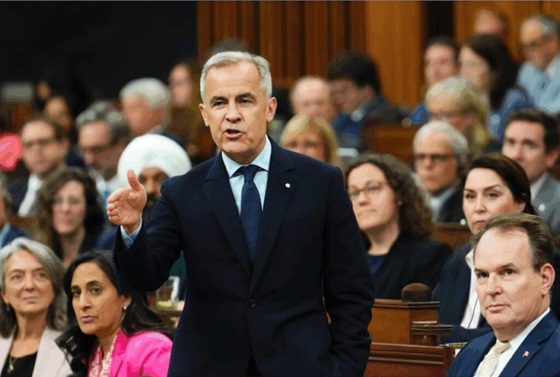
From Energy Now
By Margareta Dovgal
Playing politics with pipelines is a time-honored Canadian tradition. Recent events in the House of Commons offered a delightful twist on the genre.
The Conservatives introduced a motion quoting the Liberals’ own pipeline promises laid out in the Memorandum of Understanding (MOU) with Alberta, nearly verbatim. The Liberals, true to form, killed it 196–139 with enthusiastic help from the NDP, Bloc, and Greens.
We all knew how this would end. Opposition motions like this never pass; no government, especially not one led by Mark Carney, is going to let the opposition dictate the agenda. There’s not much use feigning outrage that the Liberals voted it down. The more entertaining angle has been watching closely as Liberal MPs twist themselves into pretzels explaining why they had to vote “no” on a motion that cheers on a project they claim to support in principle.
Liberal MP Corey Hogan dismissed the motion as “game-playing” designed to “poke at people”.
And he’s absolutely right to call it a “trap” for the Liberals. But traps only work when you walk into them.
Indigenous Services Minister Mandy Gull-Masty deemed the motion an “immature waste of parliamentary time” and “clearly an insult towards Indigenous Peoples” because it didn’t include every clause of the original agreement. Energy Minister Tim Hodgson decried it as a “cynical ploy to divide us” that “cherry-picked” the MOU.
Yet the prize for the most tortured metaphor goes to the prime minister himself. Defending his vote against his own pipeline promise, Carney lectured the House that “you have to eat the entire meal, not just the appetizer.”
It’s a clever line, and it also reveals the problem. The “meal” Carney is serving is stuffed with conditions. Environmental targets or meaningful engagement with Indigenous communities aren’t unrealistic asks. A crippling industrial carbon price as a precondition might be though.
But the prime minister has already said the quiet part out loud.
Speaking in the House a few weeks ago, Carney admitted that the agreement creates “necessary conditions, but not sufficient conditions,” before explicitly stating: “We believe the government of British Columbia has to agree.”
There is the poison pill. Handing a de facto veto to a provincial government that has spent years fighting oil infrastructure is neither constitutionally required nor politically likely. Elevating B.C.’s “agreement” to a condition, which is something the MOU text itself carefully avoids doing, means that Carney has made his own “meal” effectively inedible.
Hodgson’s repeated emphasis that the Liberal caucus supports “the entire MOU, the entire MOU” only reinforces this theory.
This entire episode forces us to ask whether the MOU is a real plan to build a pipeline, or just a national unity play designed to cool down the separatist temperature in Alberta. My sense is that Ottawa knew they had to throw a bone to Premier Danielle Smith because the threat of the sovereignty movement is gaining real traction. But you can’t just create the pretense of negotiation to buy time.
With the MOU getting Smith boo’ed at her own party’s convention by the separatists, it’s debatable whether that bone was even an effective one to throw.
There is a way. The federal government has the jurisdiction. If they really wanted to, they could just do it, provided the duty to consult with and accommodate Indigenous peoples was satisfied. Keep in mind: no reasonable interpretation equates Section 35 of the Charter to a veto.
Instead, the MOU is baked with so many conditions that the Liberals have effectively laid the groundwork for how they’re going to fail.
With overly-hedged, rather cryptic messaging, Liberals have themselves given considerable weight to a cynical theory, that the MOU is a stalling tactic, not a foundation to get more Canadian oil to the markets it’s needed in. Maybe Hodgson is telling the truth, and caucus is unified because the radicals are satisfied that “the entire MOU” ensures that a new oil pipeline will never reach tidewater through BC.
So, hats off to the legislative affairs strategists in the Conservative caucus. The real test of Carney’s political power continues: can he force a caucus that prefers fantasy economics into a mold of economic literacy to deliver on the vision Canadians signed off on? Or will he be hamstrung trying to appease the radicals from within?
Margareta Dovgal is managing director of Resource Works Society.
Daily Caller
Paris Climate Deal Now Decade-Old Disaster
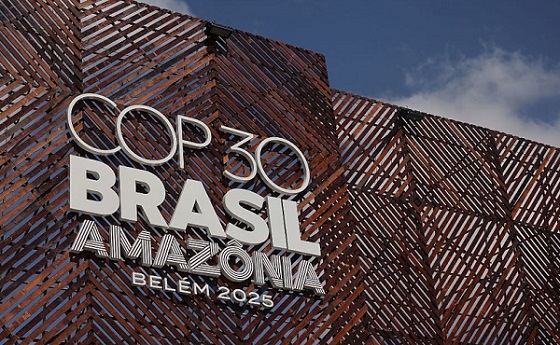

From the Daily Caller News Foundation
By Steve Milloy
The Paris Climate Accord was adopted 10 years ago this week. It’s been a decade of disaster that President Donald Trump is rightly trying again to end.
The stated purpose of the agreement was for countries to voluntarily cut emissions to avoid the average global temperature exceeding the (guessed at) pre-industrial temperature by 3.6°F (2°C) and preferably 2.7°F (1.5°C).
Since December 2015, the world spent an estimated $10 trillion trying to achieve the Paris goals. What has been accomplished? Instead of reducing global emissions, they have increased about 12 percent. While the increase in emissions is actually a good thing for the environment and humanity, spending $10 trillion in a failed effort to cut emissions just underscores the agreement’s waste, fraud and abuse.
As a nonprofit, we are dependent on the generosity of our readers.
Please consider making a small donation of any amount here.
Thank you!
But wasting $10 trillion is only the tip of the iceberg.
The effort to cut emissions was largely based on forcing industrial countries to replace their tried-and-true fossil fuel-based energy systems with not-ready-for-prime-time wind, solar and battery-based systems. This forced transition has driven up energy costs and made energy systems less reliable. The result of that has been economy-crippling deindustrialization in former powerhouses of Germany and Britain.
And it gets worse.
European nations imagined they could reduce their carbon footprint by outsourcing their coal and natural gas needs to Russia. That outsourcing enriched Russia and made the European economy dependent on Russia for energy. That vulnerability, in turn, and a weak President Joe Biden encouraged Vladimir Putin to invade Ukraine.
The result of that has been more than one million killed and wounded, the mass destruction of Ukraine worth more than $500 billion so far and the inestimable cost of global destabilization. Europe will have to spend hundreds of billions more on defense, and U.S. taxpayers have been forced to spend hundreds of billions on arms for Ukraine. Putin has even raised the specter of using nuclear weapons.
President Barack Obama unconstitutionally tried to impose the Paris agreement on the U.S. as an Executive agreement rather than a treaty ratified by the U.S. Senate. Although Trump terminated the Executive agreement during his first administration, President Joe Biden rejoined the agreement soon after taking office, pledging to double Obama’s emissions cuts pledge to 50 percent below 2005 levels by 2030.
Biden’s emissions pledge was an impetus for the 2022 Inflation Reduction Act that allocated $1.2 trillion in spending for what Trump labeled as the Green New Scam. Although Trump’s One Big Beautiful Bill Act reduced that spending by about $500 billion and he is trying to reduce it further through Executive action, much of that money was used in an effort to buy the 2024 election for Democrats. The rest has been and will be used to wreck our electricity grid with dangerous, national security-compromising wind, solar and battery equipment from Communists China.
Then there’s this. At the Paris climate conference in 2015, U.S. Secretary of State John Kerry stated quite clearly that emissions cuts by the U.S. and other industrial countries were meaningless and would accomplish nothing since the developing world’s emissions would be increasing.
Finally, there is the climate realism aspect to all this. After the Paris agreement was signed and despite the increase in emissions, the average global temperature declined during the years from 2016 to 2022, per NOAA data.
The super El Nino experienced during 2023-2024 caused a temporary temperature spike. La Nina conditions have now returned the average global temperature to below the 2015-2016 level, per NASA satellite data. The overarching point is that any “global warming” that occurred over the past 40 years is actually associated with the natural El Nino-La Nina cycle, not emissions.
The Paris agreement has been all pain and no gain. Moreover, there was never any need for the agreement in the first place. A big thanks to President Trump for pulling us out again.
Steve Milloy is a biostatistician and lawyer. He posts on X at @JunkScience.
-

 Community2 days ago
Community2 days agoCharitable giving on the decline in Canada
-

 Business1 day ago
Business1 day agoCanada’s recent economic growth performance has been awful
-

 Alberta1 day ago
Alberta1 day agoCanada’s New Green Deal
-
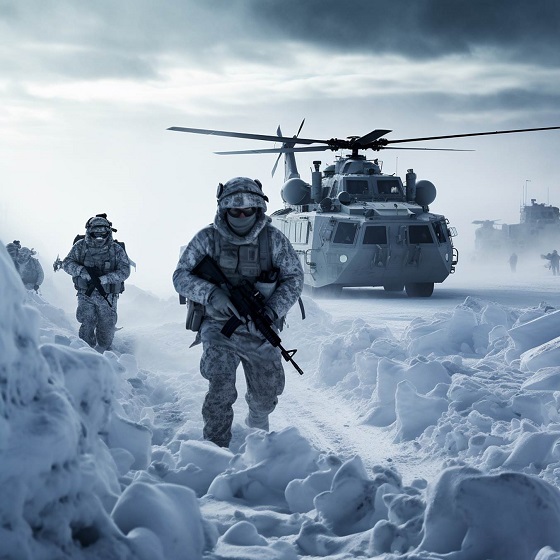
 armed forces1 day ago
armed forces1 day agoOttawa’s Newly Released Defence Plan Crosses a Dangerous Line
-

 Alberta1 day ago
Alberta1 day agoAlberta’s huge oil sands reserves dwarf U.S. shale
-

 Health1 day ago
Health1 day agoSaskatchewan woman approved for euthanasia urged to seek medical help in Canada rather than US
-
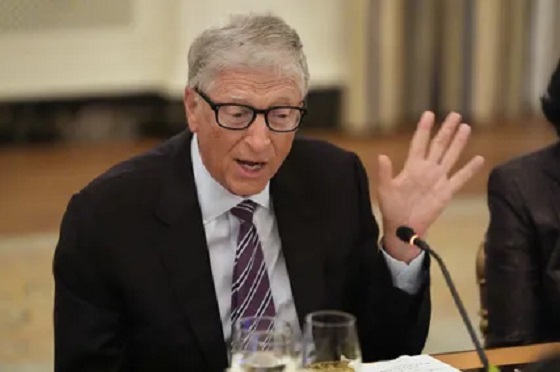
 Business1 day ago
Business1 day agoCOP30 finally admits what resource workers already knew: prosperity and lower emissions must go hand in hand
-

 Health1 day ago
Health1 day agoCanadian gov’t considers sharing census data on gender-confused children






